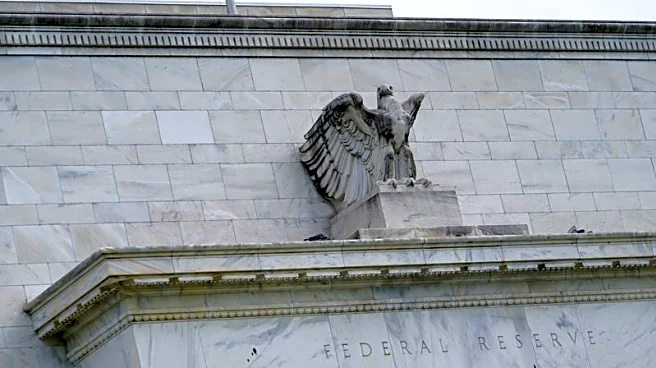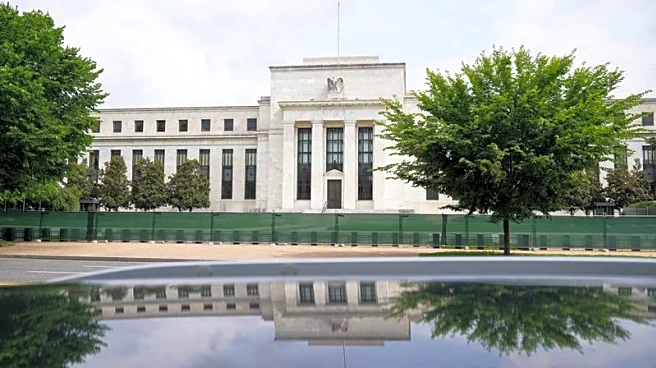What's Happening?
The Federal Reserve is anticipated to lower its benchmark interest rate by 25 basis points at its upcoming meeting on October 29, 2025. This move is expected to bring the target range to 3.75% to 4.00%.
Another similar rate cut is projected for December, potentially reducing rates to 3.50% to 3.75%. These actions are aimed at supporting a slowing labor market and addressing the economic impact of the ongoing federal government shutdown, which has disrupted the availability of key economic data. Despite the potential financial benefits, a significant portion of Americans remain indifferent to these rate cuts, with a survey by WalletHub indicating that 65% of respondents feel indifferent or unhappy about the cuts.
Why It's Important?
The Federal Reserve's decision to cut interest rates is significant as it could save consumers billions of dollars. Lower rates typically lead to reduced borrowing costs, which can benefit credit card users and those seeking new car loans. WalletHub estimates that credit card users could save at least $1.92 billion in interest over the next year. However, the broader public's indifference may stem from ongoing concerns about inflation, which remains a pressing issue for many Americans. The potential for rate cuts to reignite inflation is a concern, as lower borrowing costs can lead to increased spending and higher prices. This situation highlights the complex balance the Federal Reserve must maintain between stimulating economic growth and controlling inflation.
What's Next?
The Federal Reserve's upcoming meetings in October and December will be closely watched for further rate cut decisions. The impact of these cuts on consumer spending and inflation will be critical in shaping future monetary policy. Additionally, the release of the September inflation data by the Bureau of Labor Statistics on October 24 will provide important insights into the current economic climate. This data is crucial for calculating the Social Security cost-of-living adjustment, which affects millions of Americans. As the government shutdown continues, the economic landscape remains uncertain, and stakeholders will be monitoring developments closely.
Beyond the Headlines
The Federal Reserve's actions underscore the ongoing challenges in managing economic policy amid a complex and uncertain environment. The interplay between interest rates, inflation, and consumer sentiment reflects broader economic dynamics that can have long-term implications. The potential for rate cuts to stimulate economic activity must be weighed against the risk of exacerbating inflationary pressures. Additionally, the public's focus on inflation over other economic issues highlights the need for clear communication and effective policy measures to address consumer concerns and maintain economic stability.












